All summer are bright, cheerful colors of naughty attract attention, charge the energy, raise the mood. Yes, and the leaves at the nasturtium are very decorative - they are large, intensely painted in a green color. We have prepared for you information about varieties of nastures, landing and caring for it.
Characteristics and peculiarities of growing nasturtium
The birthplace of nasturtiums consider South America, more precisely - the slopes of the Andes. Here it grows as a perennial. We can not have this beauty to winter, therefore it is cultivated as an annual plant, loving heat and light, noncain and drought-resistant.
Flower shape looks like a hood. Therefore, when these plants were brought from Holland to Russia, they were called Capuchins for a long time. But the Latin name, sounding like Tropaeolum, the plant came up with Karl Linney. And you can translate such a name as a "little trophy". It is a favorite painter flower from France Claude Monet, in his garden under Paris this plant was given large areas. Now there are already more than 90 types of nasturtiums, many of them are represented by semi-shops or lianams with juicy shoots. The leaves are rounded, with blades, solid edge, and palphepted or in the shape of a shield. Obroat flowers, with a characteristic aroma, simple or with several rows of petals - terry, semi-world. Petals five (or more), the same number of cups and tube where nectar is like a funnel. Flowers painted in orange, rich-yellow raspberry, cream, salmon or red. The fetal has three wrinkled honesty shares, the seeds of a rounded-honesting form are growing in them. The plant is endowed with healing properties, its parts are used in cooking (in spicy seasonings, salads). Nasturtium is rich in ascorbic acid, riboflavin, thiamine, carotene, iodine, phosphorus, potassium, gray, phytoncides, vegetable antibiotics. It has been scientifically proven that nature has endowed the nasturtium therapeutic properties: diuretic, anti-inflammatory, antiseptic, expectorant, laxatives. Cosmetologists advise people suffering from acne and boils, wipe the face with tincture, which is cooked from juicy leaves of nasturtiums. To strengthen the hair, such a tincture can be rubbed in the roots of hair bulbs. By the way, the smell of cappuchins planted in the country, scares many pests - Colorado beetle, Tlya, caterpillars of cabbage, whiteflink, nematodes, rodents. On those gardens where they found a place for nasturtium, the number of these pests is reduced. There is information that cappucos protect potatoes from phytoofluorosis, vegetables from viral and fungal infections.
It should be known that it is impossible to place early to place a nasturtium in the open ground, otherwise even weak frost causes it irreparable harm. In those places where a lot of sun falls on a nasture, it blooms very abundantly. But in a half-tree on this plant, many large leaves are formed, but few buds. The soil of the nasturtium on moral loose, moderately moistened, where water will not be stamped. For example, sandy or drum soils. On too fertile lands, this elegant plant "marks", that is, gives the oha of leaves, but very few flowers. Before the start of flowering, the nasturtium needs abundant and frequent irrigation. But when the flowers are revealed, the amount of water should be reduced, otherwise the green mass will continue to grow, but the abundance of flowers you will not see. Fresh manure to feed plants can not be applied, but Potassium and phosphoric fertilizers are very well stimulated by the bootonization process.
A variety of nasturtiums
The most common types of nasturtium:
- Large - can grow as a shrub, reaching 80 centimeters in a height, or like liana, the naked stems of which are growing for two and a half meters. The leaves are beautiful, shiny, with long stiffs, their color is light-green on top and sipped from below. Flowers (red, salmon, yellow, apricot, cream) are formed on the plant since July and until October. In size, they are large, about 5 centimeters. We will list only a few original and worthy of the attention of the varieties: "Ladybug", "King Theodore", "Salmon Baby".
- Small - her stems are thin, branching, reach a height of 35 centimeters. Sheets are small, thyroid. Packers are also long, thin. Flowers in diameter no more than three centimeters, open on the plant from June and before the arrival of October frosts. Spectacular varieties:
- "Cherry Rose" (flowers are painted in bright red, terry);
- "Black Lady", otherwise "Black Velvet" (on the stems whose height is up to 30 centimeters, dark burgundy flowers are revealed, simple, but large - 6 centimeters).
- Schlotnaya - this semi-stammer has a creeping stems growing up to four meters. Dark green shoots are covered with thyroid leaves of the same coloring. In the summer, dark-red flowers appear on them. Many dacifices like the Lucifer variety, on the reprehension bushes of which they grow up shooting 25 centimeters. The leaves are large, saturated green, with the presence of a reddish shade. The diameter of simple flowers is approximately 6 centimeters, their orange-red painting.
- Canary (foreign) - shoots of this liana quickly grow in length more than three meters. From July and until October, small yellow flowers appear on the stems, which are similar to the bright birds from afar.
- Cultural (hybrid) - in shape and altitude, these plants can be fluttered, compact, dwarf. Examples of varieties:
- "Golden Glood" (large bright yellow terry flowers are revealed on a spherical bustard);
- "Gleaging Mahagani" (terry flowers, painted in red);
- "Moon Light" (light-yellow flowers are formed on two-meter rims).
Less often in the gardens such types of nasturtiums are found: multi-handed, eyelash, lamp, tricolor, beautiful, lilac.
And a few more varieties in demand in flower shops:
- "Day and night" (on plants two types of flowers - red and cream);
- "Vesuvius" (the flowers are interesting in painting - pink, with an admixture of orange, and on the upper petals are noticed with reddish specks);
- "Yeti" (at this plenty shape flower cream-white, in the middle there are yellow specks);
- "Aurora" (one more plenty shape, giving light orange flowers);
- "Alaska" (against the background of white-pedry leaves, flowers differ in shades of color);
- "Piano Clak" (often used as a soil river or ampel plant, having decorative leaves and red, fire-orange or yellow flowers);
- "Pic Melba" (beautiful borders are obtained with attractive cream or peach flowers);
- "Queen of India" (low bush with dark purple velvety texture flowers);
- "Canary" (on the stems of this liberty, yellow flowers, as if funny canary).
Want a naughty with white flowers, look for the Snow Maiden grade, and if with crimson, then the "Ruby" variety.
When to plant a nasture?
If the seeds of the nasturtium want to immediately send to the open ground, then it should be done from May 15 and until May 31. The main thing is that frosts remain behind.
If you want the nasturtium to bloom early, then you need to use a seed basis. Then the houses at the seeds in the tank should be planted in April. In the flower garden, this seedlings are placed in early June.
Growing nasturtium from seeds
Compact bushes can be coil together with decorative cabbage and verban near the house, on the flower beds, near the trees, tracks, next to the rosary. Liana and plenty forms are suitable for suspended vases that will decorate the walls of the veranda, loggia. Dwarf varieties are usually planted in balcony containers.
An ingenic nasturtium with small yellow flowers is wonderful on arbors, trellis next to purple, blue, pink eggs or purple petunias.
To begin with, we will analyze the seaside method of cultivation. To obtain a strong seedlings, which will then fit well, put the seeds of the nasturtium better in such cups, which have a retractable bottom. Peat pots are suitable. This advice is associated with the fact that the nasturtiums are delicate and fragile roots, so these plants are difficult to transfer the transplant, and they are not conducted by the picking. Another nuance - the seeds at the nasturtiums are very large, protected by a thick shell. Therefore, to awaken sprouts, these seeds should be placed in hot water for 24 hours. During this time swelling several times the water in the cup change, because it will cool. In small containers filled with a wet substrate, put three seed in it in it. Pour their land, close the film. On the windowsill in a warm room, the sprouts should seem after 10 days. Next, the sprouts necessarily need an intense light and a cool room (from 18 to 20 degrees), then they will not be pulled out, seedlings easily take the movement to the flower garden. As necessary, the land in the cups moisturize. When a series of spring frosts will pass, you can start planting a grimy nasture on the flower beds. The first flowers may appear on the nasturtium after landing approximately forty-five days. It may happen that frosts will suddenly come in June, then their plants cover the nonwoven material.
If there is no possibility to deal with the seedle, then immediately to the ground landing the nasturtium can be made in May, focusing on the weather conditions. After a daily soaking of seeds in hot water, make holes in the planned places of the garden. Sweep their hot potassium permanganate solution. When he is absorbed, then put three seeds in the hole and pour off the soil. The depth of the seal should not exceed two centimeters. It is desirable to put cut plastic bottles into these places, in such "mini-guy" is accelerated by the germination and development of sprouts.
Nuturing Recommendations
As we mentioned, during the period when Kapuchins are growing and gaining power until the appearance of buds, they need frequent watering. Then change the tactics of irrigation, moisturize the soil under them only when he dries. On the benefit of the nasturtiums will go, mulching, periodic feeders with superphosphate or mineral complexes. Some flower products in order to accelerate the growth of cappuchins, increase the size of their sheet plates, twice a month spray them with water in which the urea is dissolved (one matchbox for ten liters). The plenty varieties need a support to which you will be tied up. Fading and dried flowers cut off, it is soon formed by new boutons. If the variety is very impressed to you, then leave a few barring, let the fruit mature. In the fall, you can collect them at the moment when their color will become beige or whitish. If you forget to collect on time seeds, they will fall into the ground, the natural stratification in winter will pass. In the spring, green sprouts will seem in these places.
If the leaves in Kapuchins suddenly began to turn yellow, it happens if the plant lacks minerals. Try to feed it with "Azophos". There are several diseases that can hit the nasturtium:
- Gray rot - on shoots and sheet plates, gray-brown spots arise.
- Bacterial wilt - first faded the lower sheets, and then the top.
- Rust - a clear symptom - specks on the leaves of brown or black color, which are gradually turning into the tubercles.
- Mosaic - Because of this virus, a mosaic pattern appears on the leaf plates.
- Ring spottedness - it is characterized by small points on the leaves around which the border of the red-drier color passes.
Typically, such patients are digging and destroyed. And those plants that were near the patients are treated with special drugs.
Choose a nasture to your taste - stranded, ampel, growing compact bushes or vertically by support. We hope that our recommendations will help you decorate your country area or loggia and enjoy bright foliage and abundant blossom of Pahuchi Kapuchins.

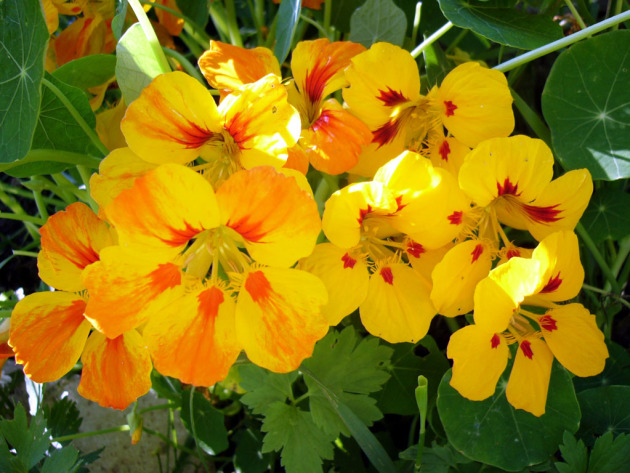
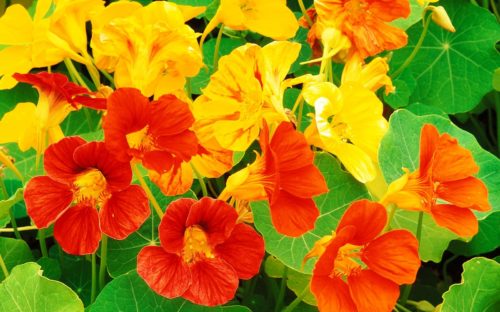
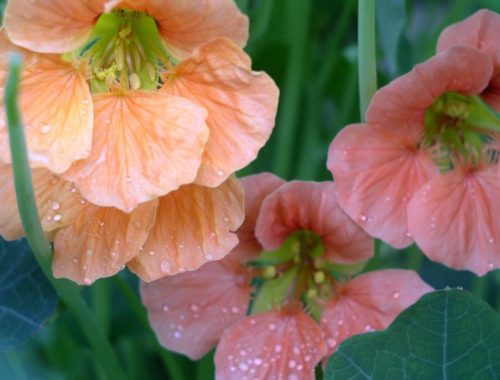
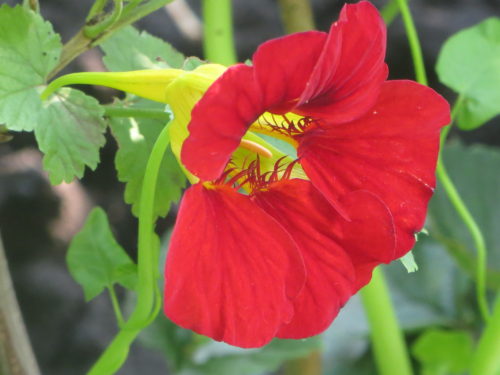
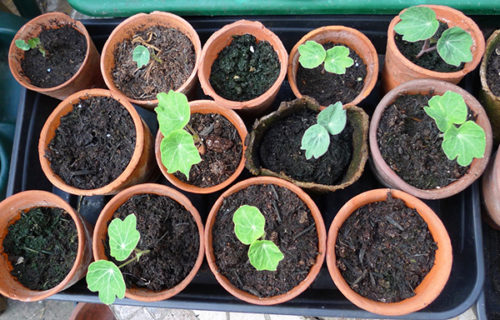
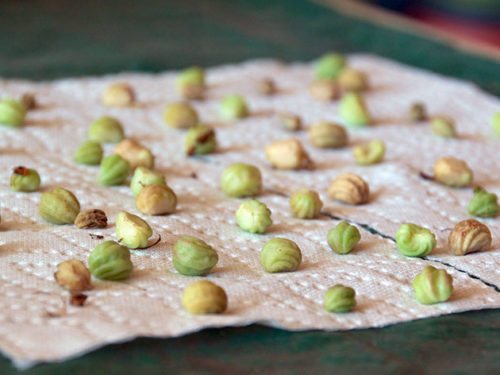
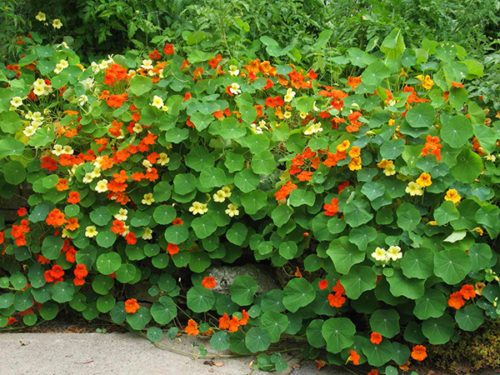
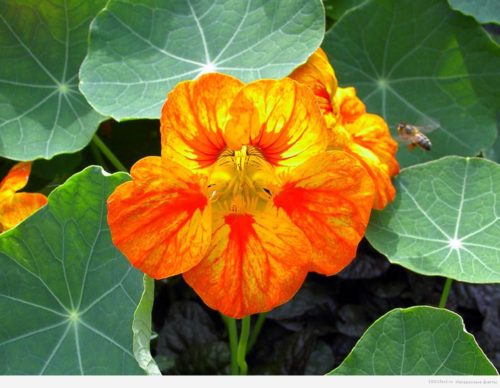
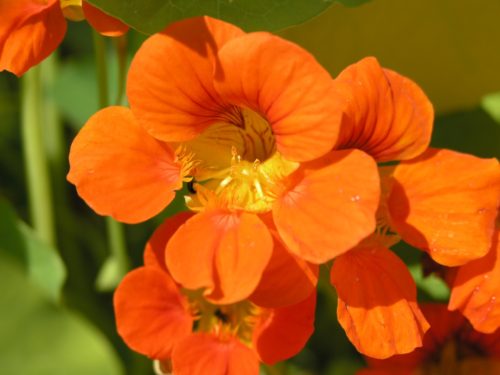
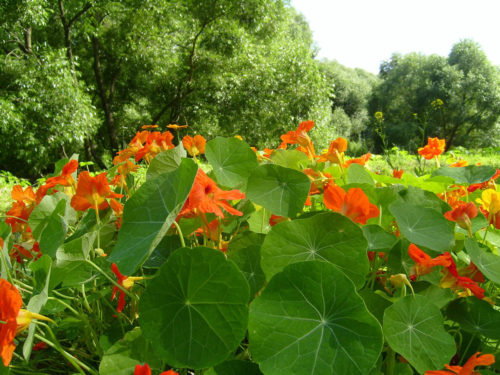
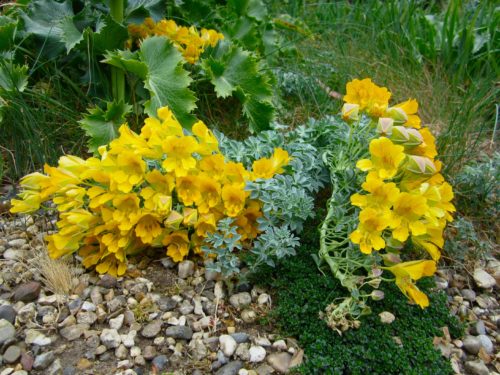
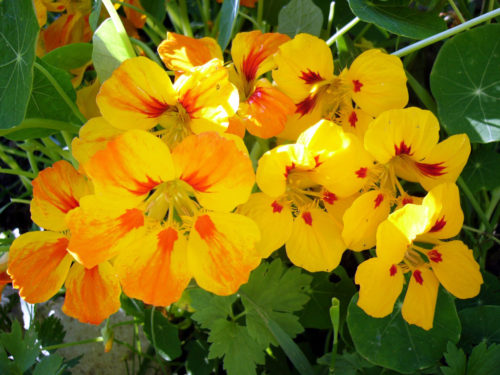
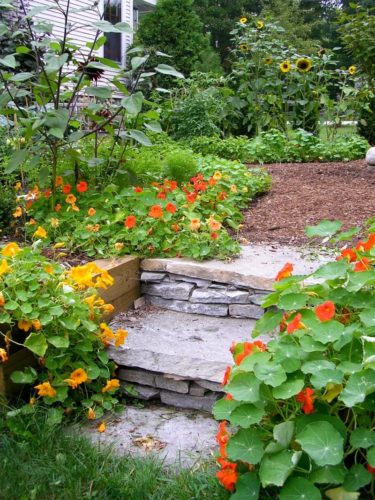












 Start a discussion ...
Start a discussion ...